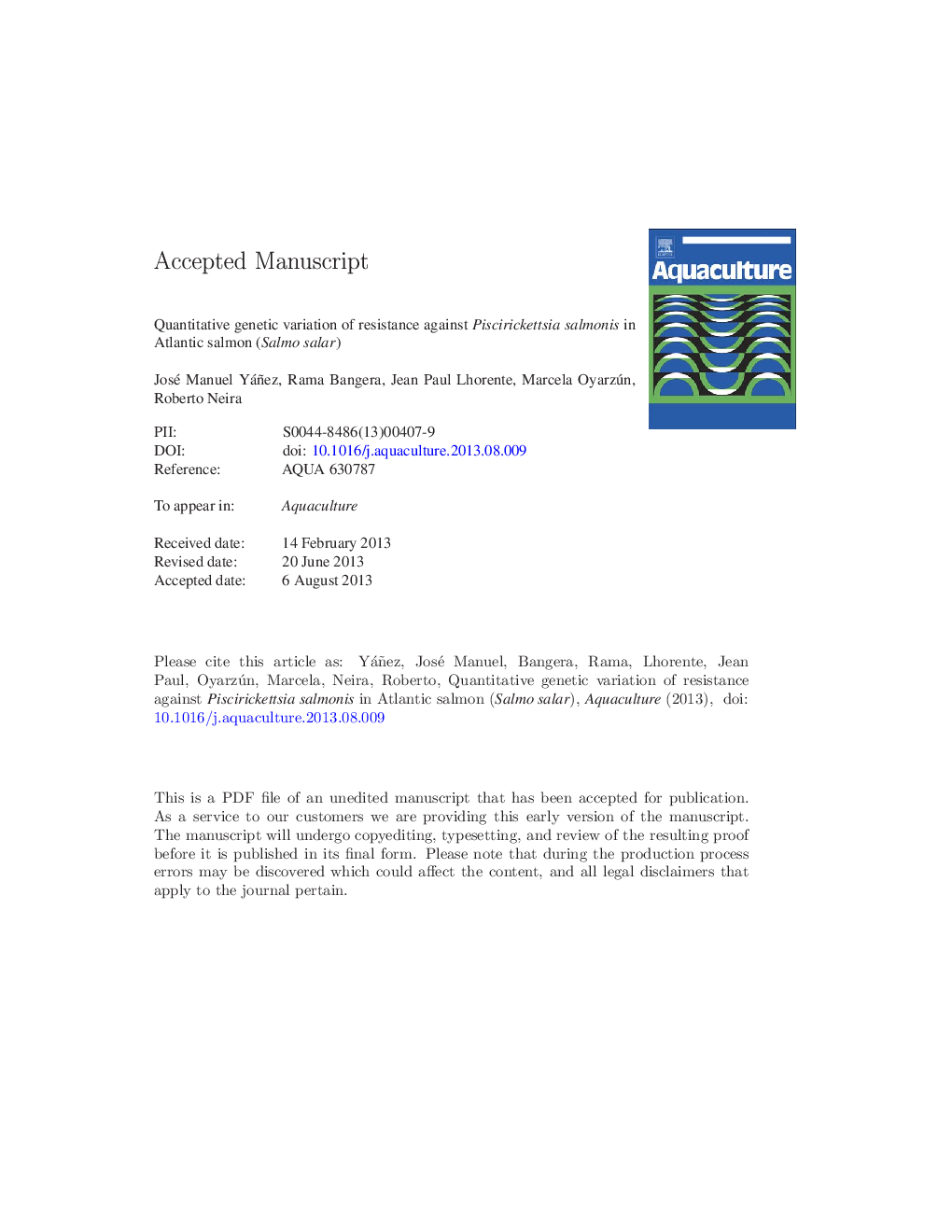| Article ID | Journal | Published Year | Pages | File Type |
|---|---|---|---|---|
| 8495369 | Aquaculture | 2013 | 26 Pages |
Abstract
Piscirickettsiosis (Piscirickettsia salmonis) is one of the diseases that cause large economic losses in Chilean salmon industry. Genetic improvement of disease resistance represents one strategy for controlling infectious diseases in farmed fish. However, knowledge of whether genetic variation exists for piscirickettsiosis resistance is needed in order to determine the feasibility of including this trait into the breeding goal. Using data from a challenge test performed on 2601 Atlantic salmon (Salmo salar) from 118 full-sib groups (40 half-sib groups) we found significant genetic variation for resistance to piscirickettsiosis. We used a cross-sectional linear model (CSL) and a binary threshold (probit) model (THR) to analyze the test-period survival, a linear model (LIN), Cox (COX) and Weibull (WB) frailty proportional hazard models to analyse the day at death, and a survival score (SS) model with a logit link to analyze the test-day survival. The estimated heritabilities for the different models ranged from 0.11 (SS) to 0.41 (COX). The Pearson and Spearman correlation coefficients between full-sib families estimated breeding values (EBVs) from the six statistical models were above 0.96 and 0.97, respectively. We used different data subsets, splitting the entire dataset both at random and by tank, in order to predict the accuracy of selection for each model. In both cases COX (0.8 and 0.79) and CSL (0.76 and 0.71) models showed the highest and the lowest accuracy of selection, respectively. These results indicate that resistance against P. salmonis in Atlantic salmon might be genetically improved more efficiently by means of using models which take both time to death and data censoring into account in the genetic evaluations.
Related Topics
Life Sciences
Agricultural and Biological Sciences
Aquatic Science
Authors
José Manuel Yáñez, Rama Bangera, Jean Paul Lhorente, Marcela Oyarzún, Roberto Neira,
